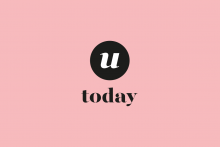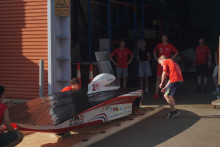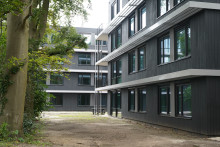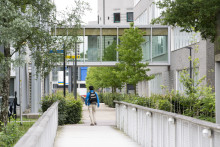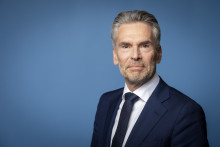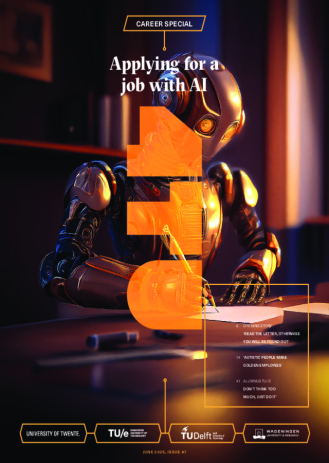The AEI-Open Windows program (Arab Educational Institute), a community education program established in 1986 by Palestinian educators, hosted the travelers sponsored by the Dutch IKV (Interfaith Peace Conference). AEI is active in Bethlehem, Ramallah, and Hebron as an outreach organization encouraging cultural exchange and advocating non-violent conflict resolutions. Bas van Eck, a chemical engineering student, stayed with a Muslim family in Bethlehem. `It was amazing to stay with these very generous people; I even attended a birthday party and held the newborn son of my host.' Anton Bijl (mechanical engineering), Jos Koelewijn (biomedical engineering), Jelle de Bruin (business administration) and Marc Brummelman (technological management) also took part. Martin Stienstra from International Management and SPe pastor Kees Kuyvenhoven led the group. Among the many holy sites visited was the Church of the Nativity, built in 334 and marking the site of the birth of Jesus. Hebron, one of the oldest continuously inhabited cities in the world, is a highly disputed area that contains holy sites of Abraham and has a special meaning for Jews, Christians, and Muslims.
The students met with Palestinian students and educators at the AEI Open Windows Youth House. During the week, the group discussed the theme of the trip (democracy), heard speakers (including the mayor and the governor of Bethlehem, a representative of Hamas, and a local journalist), attended workshops, and took excursions to Hebron and Jerusalem. Under the topic of democracy the students examined first-hand the reality of the peace process, the role of independent and Western media, Palestinian and Israeli culture, the role of women, and the evolution of political organizations such as Hamas.
A woman from AEI lives with her husband and three children on the border of the Israeli wall. The completed wall will be eight meters high and will surround their house on three sides. There is no discussion of a chance to improve this situation. To Kuyvenhoven this represents how many Palestinians feel about the wall: boxed in with little hope of escape.
In Hebron the students saw another memorable sight: alleys covered with mesh to catch the garbage thrown down by the Israelis quartered above. `The whole city is a bleak fortress,' says Kuyvenhoven. Since the second Intifada (2000), there has been a massive drop in tourism to the area. Impressions from Western media represent the worst of events say the returning students; they were welcomed warmly and openly and, in spite of the many security checks, the holy sites were not dangerous to visit.
Reactions from students were intense. Everyone agreed that a lot of activities and experiences were crammed into a week, many of which challenged preconceptions of the area. `Daily life in the occupied territories is really unimaginable from the media we see,' says Jos Koelewijn. `Everything in these people's lives is overshadowed by random security checks and the hassles of occupation. There is no way to plan your life.'
Also surprising were the great differences between European norms and the culture of the Middle East. Many residents were surprised when they heard some students had no concrete central faith. `There, your religious affiliation defines everything about you,' says Marc Brummelman. `This trip changed my mind 180 degrees about the Israeli/Arab conflict; and I felt like I went in with an informed opinion.' The students noticed that the recent construction of the wall has prohibited more than just people from traveling between regions; the economic development of Palestine is also hamstrung by all the prohibitions. `We went to build up contact with AEI,' says Kuyvenhoven, `and to expose our students to this rich cultural area. Next year a master's student will go back for a ten-week study.' The entire group agreed it was an eye-opening experience that only scraped the surface of a complex and powerful story.

In the bus to Bethlehem.In front: Fuad Giacaman, director of the AEI and Anton Murra, subdirector.Behind Murra, among the Palestinian travellers are the Dutch participants: lecturer Martin Stienstra, students Arjan Cremers, Yvonne Cuijpers, Anton Bijl, Bas van Eck, René Kroes, Jos Koelewijn, Jelle de Bruin, Marc Brummelman. The picture was taken by pastor Kees Kuyvenhoven, Spe studentenplein.


